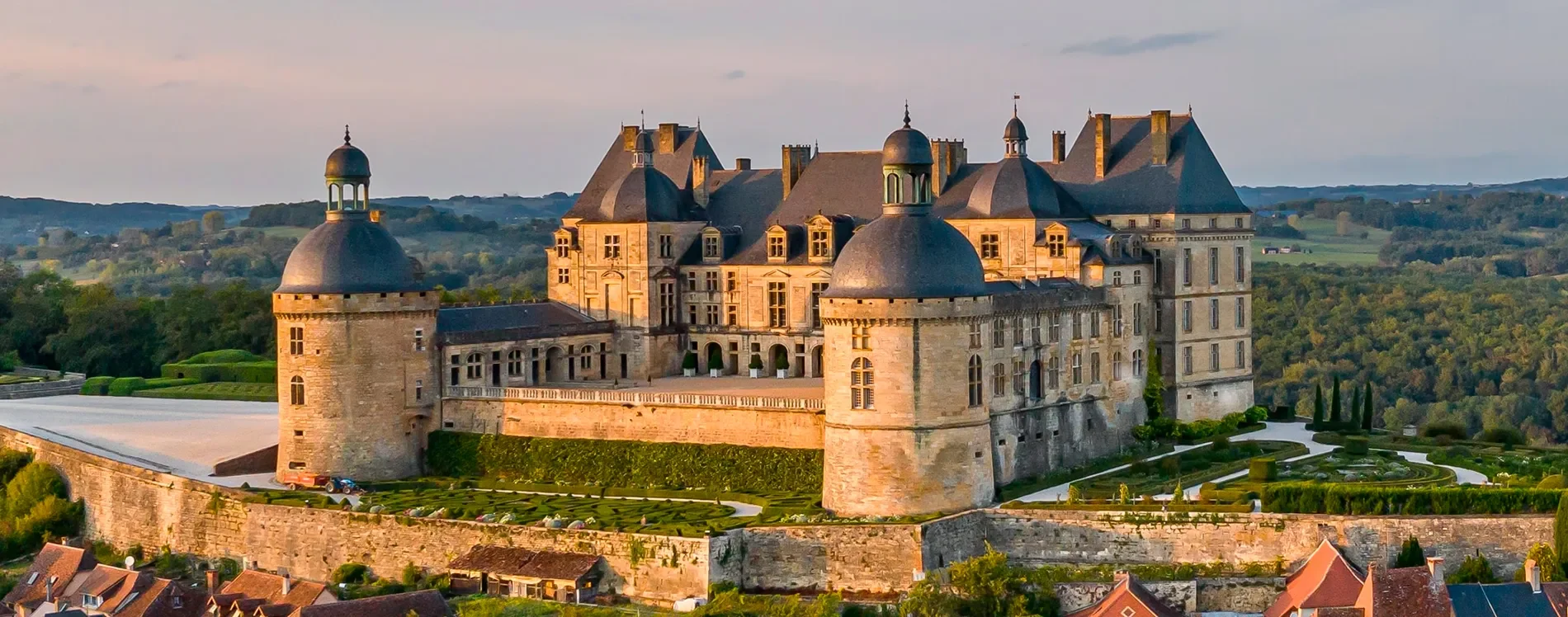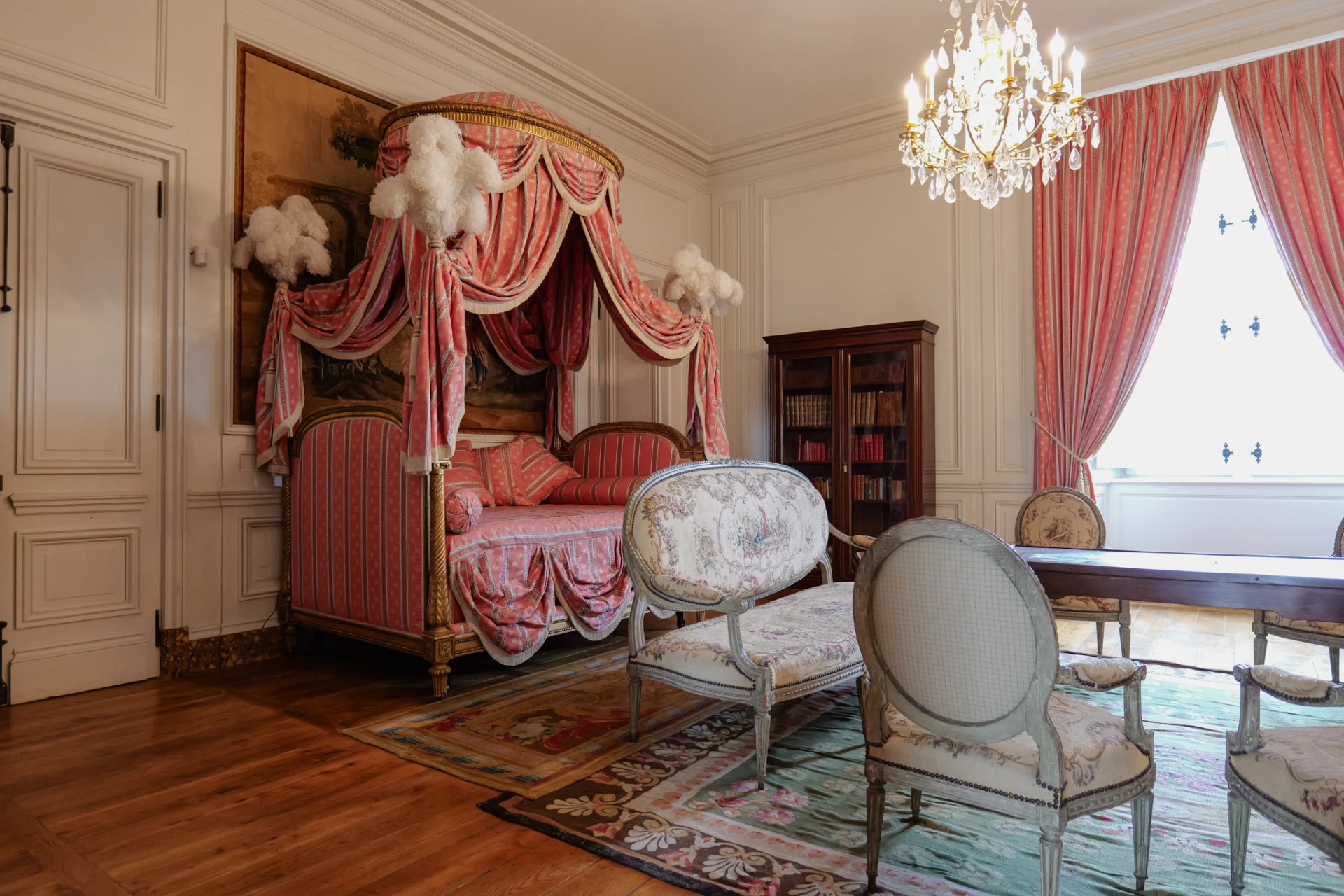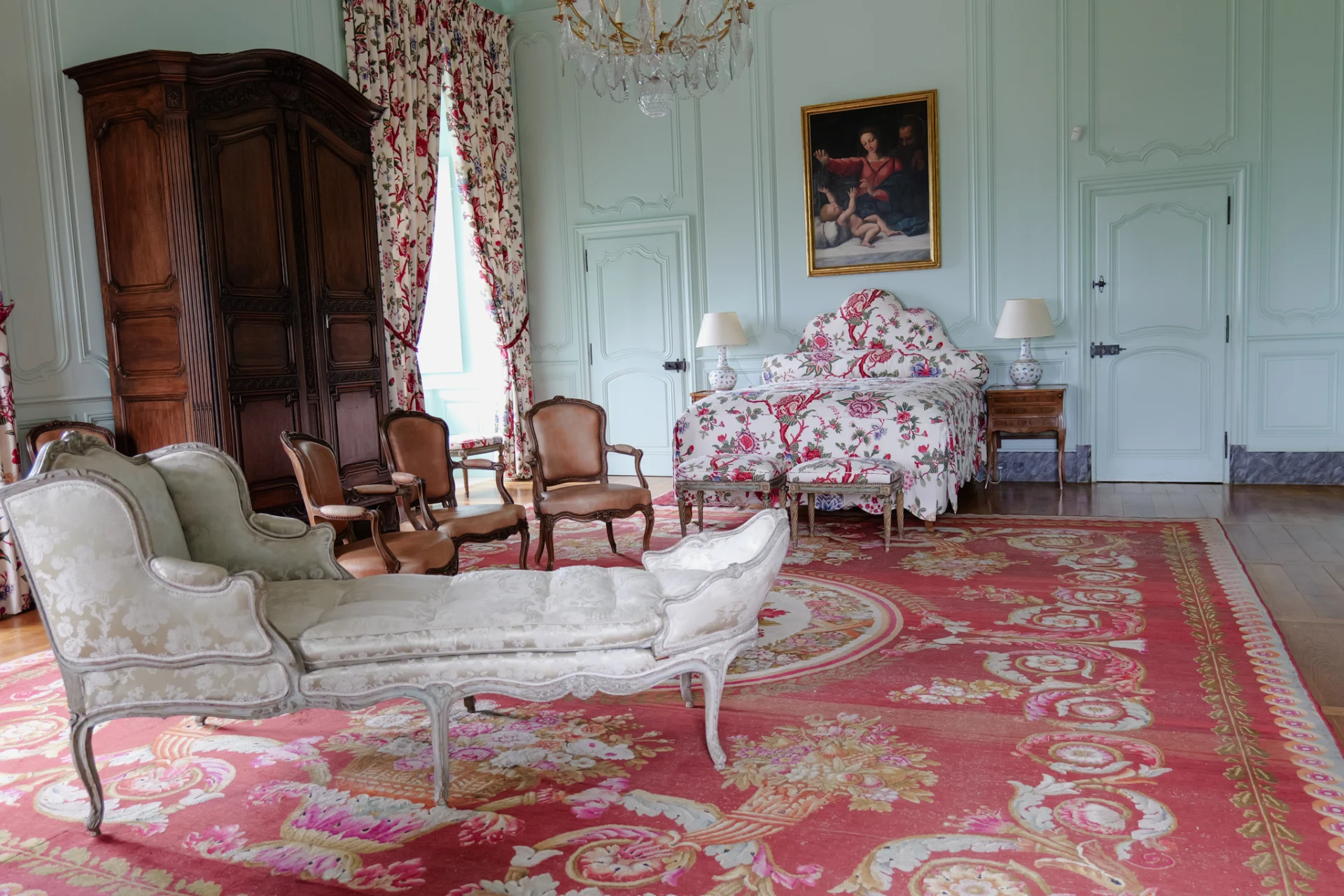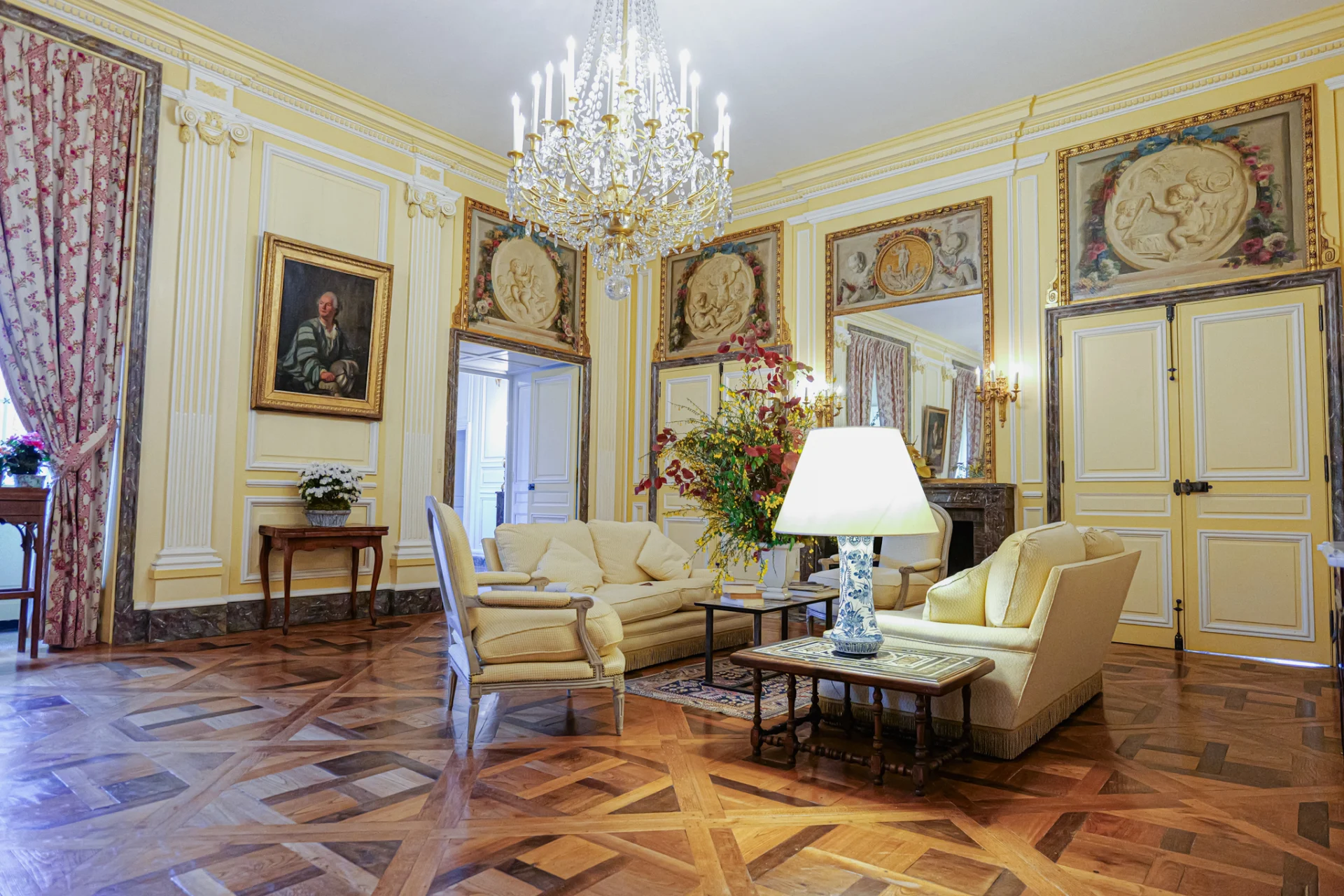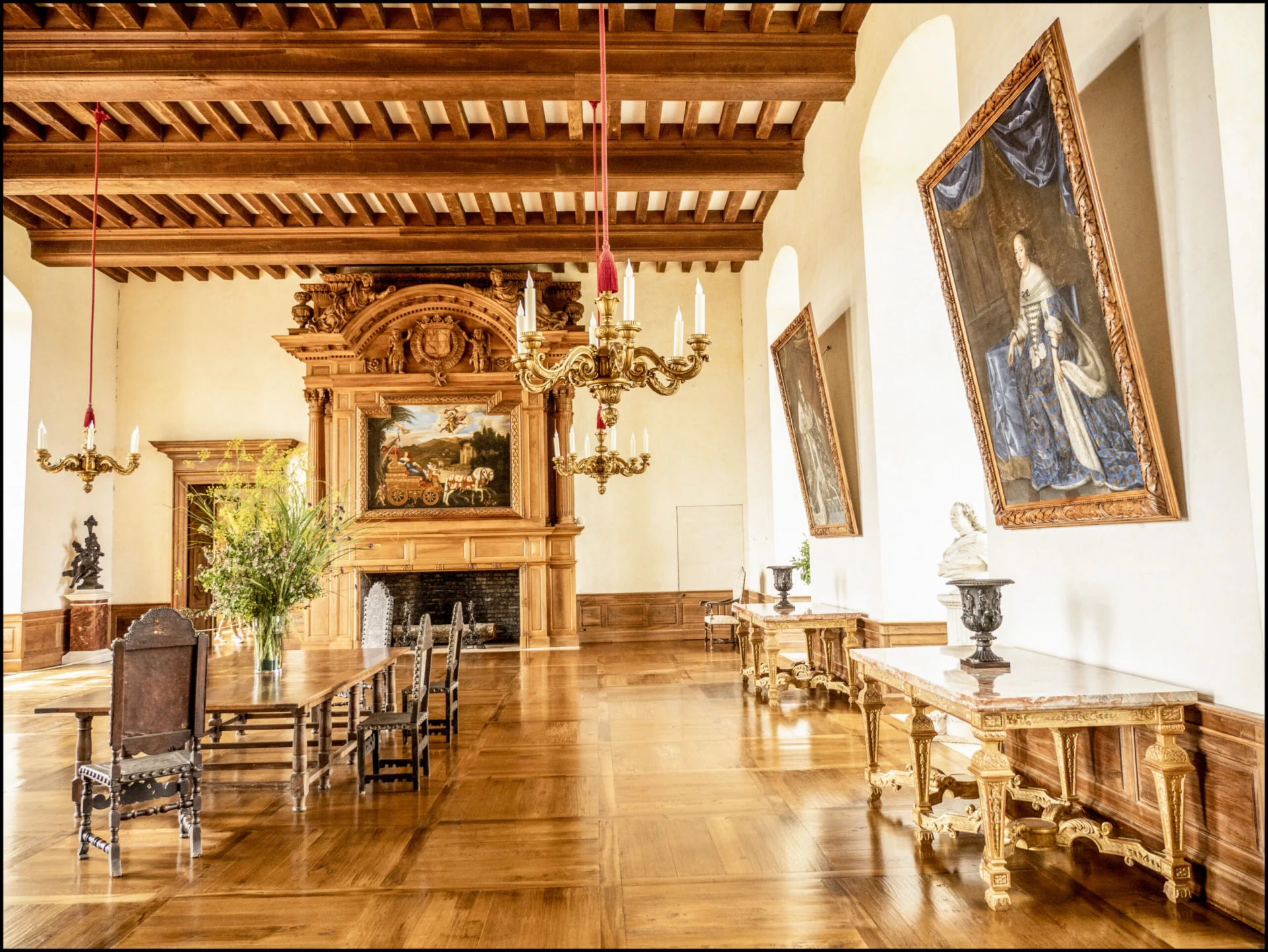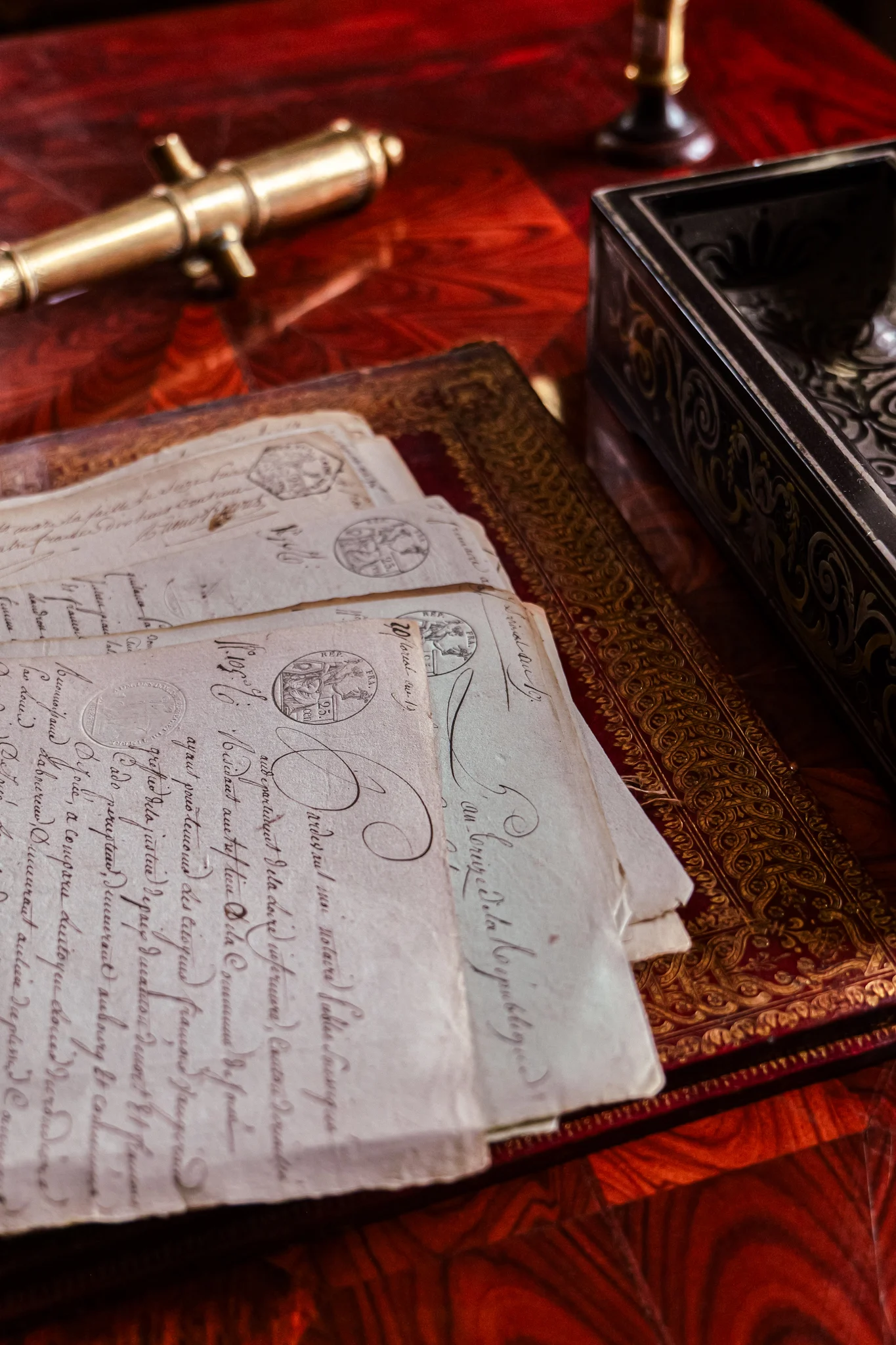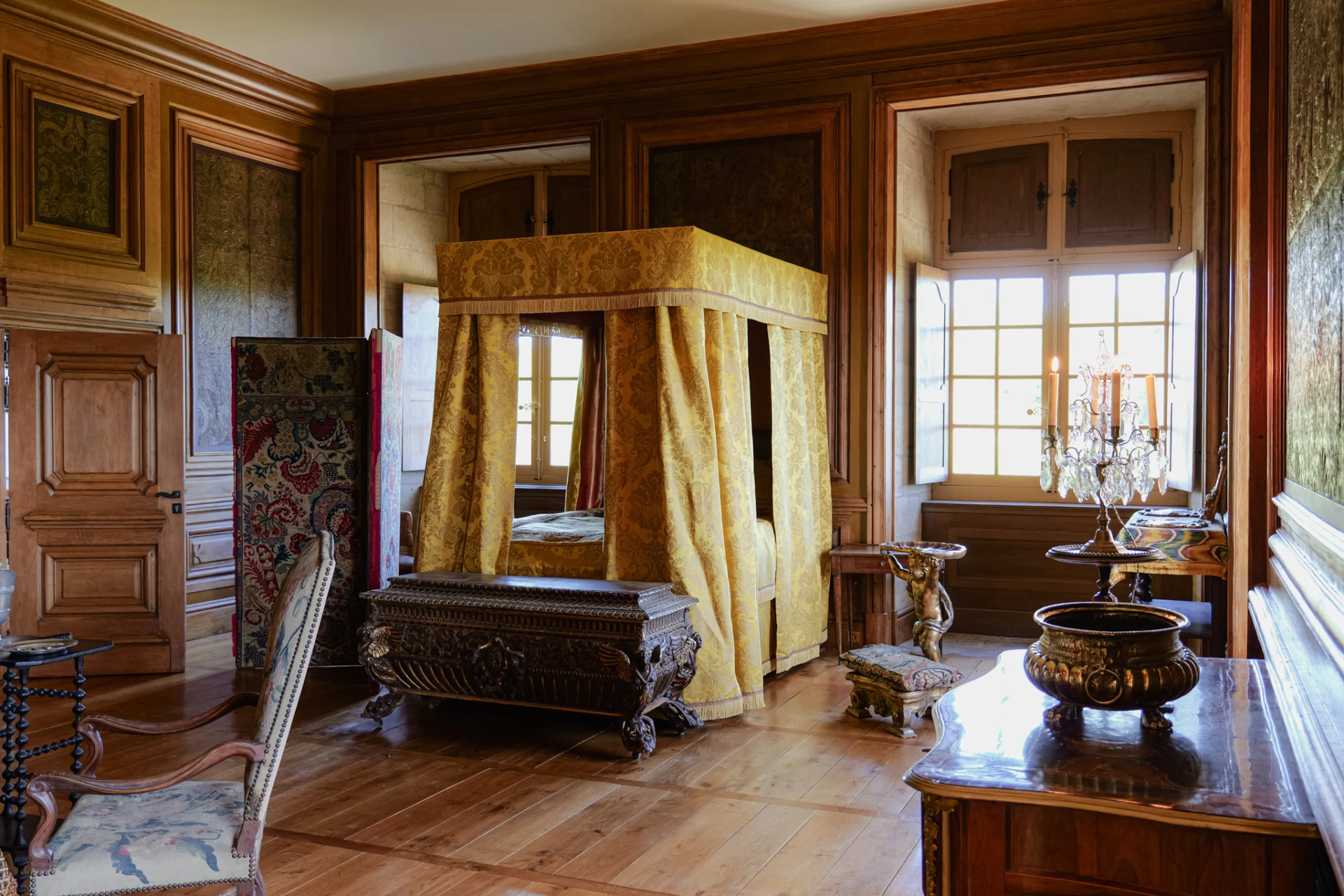Lutrin Chapel
Lutrin Chapel
A typical Périgord soil!
The floor of the chapel is built using the pisé technique. This involves cutting small stones at an angle and placing them side by side in rammed earth, sand or clay. The nave features rosettes, a cross and the monogram of Christ (IHS = Iesus Hominum Salvator, Jesus Saviour of Men), while the choir features fleurs-de-lis and, of course, the Hautefort coat of arms. Look at the marquetry effect, with the adobe floor flush with the ashlars.
A monumental opening
As you enter the chapel, you come face to face with a monumental opening now adorned with a red stained glass window. This is the former main entrance to the château. It was closed in the 19th century when the esplanade, which led down to the village, was replaced by the formal gardens you can admire today. The large, bright red stained glass window was created in collaboration with contemporary artist François Rouan. At the request of Helene David-Weill, then president of the Fondation, François Rouan created several exclusive works for Hautefort, including the two paintings on the Great Staircase and this stained glass window. Its colour evokes the royal red of the 17th century. Made from sand glass by master glassmaker Fabrice Courageux, this work of art combines contemporary art and traditional know-how, showing that Hautefort is still a place of creation.
A coffered dome
Once inside the chapel's rotunda, you can admire a magnificent coffered dome. This is a technique used in ancient architecture and reused in the classical period. It consists of creating a trompe-l'œil effect using coffers arranged in a chequered pattern to accentuate the impression of depth of the dome. At its centre, the radiating triangle is an ancient Christian symbol of the Trinity, with the eye of God at its centre, symbolising providence. This ancient symbol of the eye can be found in ancient Egypt, Greek mythology and as a symbol of the Age of Enlightenment, as well as on the 1 dollar note... Knowledge belongs to everyone!
A practical hiding place
As you walk around the choir, you will notice a recess on the left. This is not a confessional, but a real hiding place from which the owner of the château could follow the service while enjoying the view of the formal gardens... if he got bored!
